VAN ALLEN BELTS
NASA’s first satellite, launched in 1958, discovered two giant swaths of radiation encircling Earth. In 2012, a third belt was found by the Van Allen Probes.
Five decades later, scientists are still trying to unlock the mysteries of these phenomena known as Radiation Belts or “Van Allen Belts”.
As solar wind and cosmic rays carry fast-moving, highly energized particles past Earth, scientists think some of these particles become trapped by the planet’s magnetic field. The resulting belts, one inner and one outer, can swell or shrink in size in response to incoming particles from Earth’s upper atmosphere and changes in the solar wind.
What are the Radiation Belts?
In 1958, the team led by University of Iowa professor James A. Van Allen, using observations from Explorer 1 (the first American satellite), made the surprising discovery that intense radiation – highly-energized charged particles – is trapped by our planet’s magnetic field. Later space missions revealed that the radiation occurs in two swaths around Earth, now called the Van Allen Radiation Belts. The inner, relatively stable belt, composed mainly of protons, extends from the top of the atmosphere out to an altitude of some 4,000 miles. The outer belt, composed mainly of high-energy, fast-moving electrons, extends from about 8,000 miles to more than 26,000 miles above Earth’s surface.
We now know that intense particle radiation occurs around other planets and in other regions of our solar system, and throughout the entire universe. But how this radiation is created and behaves remains a mystery. Earth’s radiation belts can respond in unexpected ways, often quite suddenly and dramatically swelling and shrinking in response to dynamic changes in the sun.
Why study the Radiation Belts?
Understanding the radiation belt environment and its variability is important for two reasons. First, it advances fundamental physics knowledge about space processes, and second, it will allow mitigation of space weather in areas of spacecraft design and operations, mission planning, and astronaut safety. The instruments on the twin RBSP spacecraft will provide the measurements needed to characterize, quantify, and understand the processes that produce the populations of energetic charged particles that comprise the Earth’s radiation belts and cause them to vary dramatically. These processes of particle acceleration apply not only to the belts but to other objects and events across the solar system and universe.
Space weather can change the ionizing radiation dose on polar aircraft flights, disable satellites, cause power grid failures, and disrupt global positioning system, television, and telecommunications signals. Understanding the science of space weather can lead to a capability for prediction, which will allow for better management and protection of space-based or – affected technologies.
Sometimes the belts don’t change when scientists expect them to.
New NASA spacecraft scheduled to launch in August 2012 seek to determine what kinds of solar outbursts and other space weather cause specific changes in the radiation belts—answering some of the questions first raised decades ago. The visualization shows the belts responding to a strong, steady burst of material and energy from the sun.
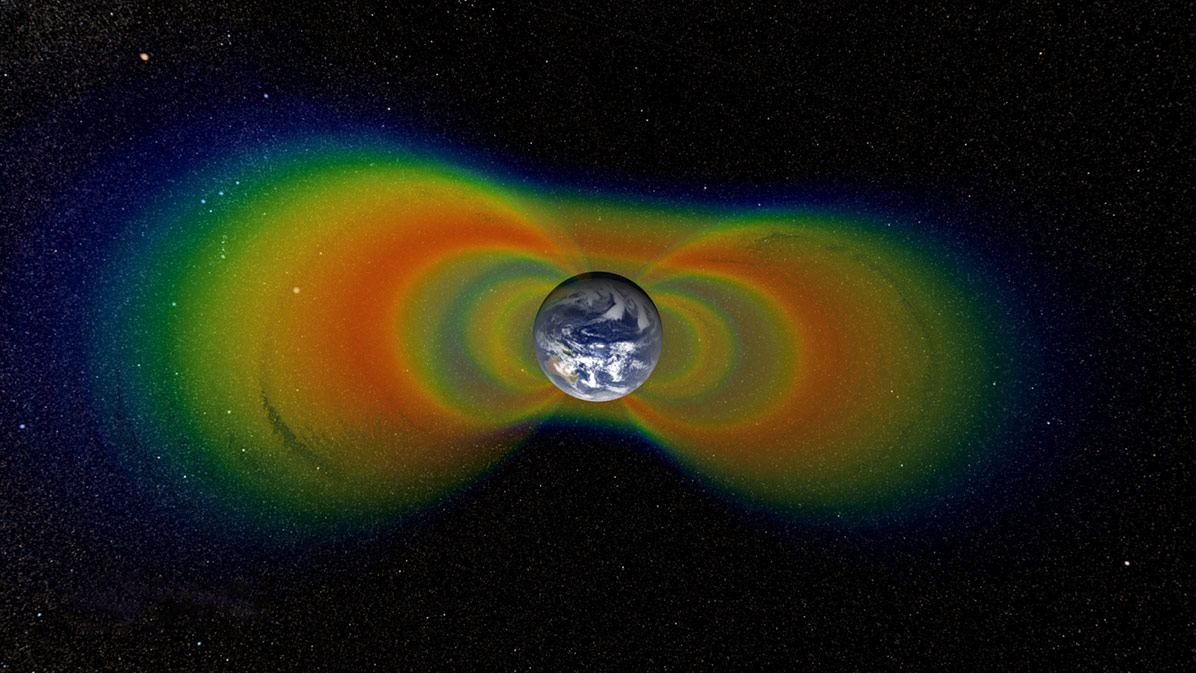
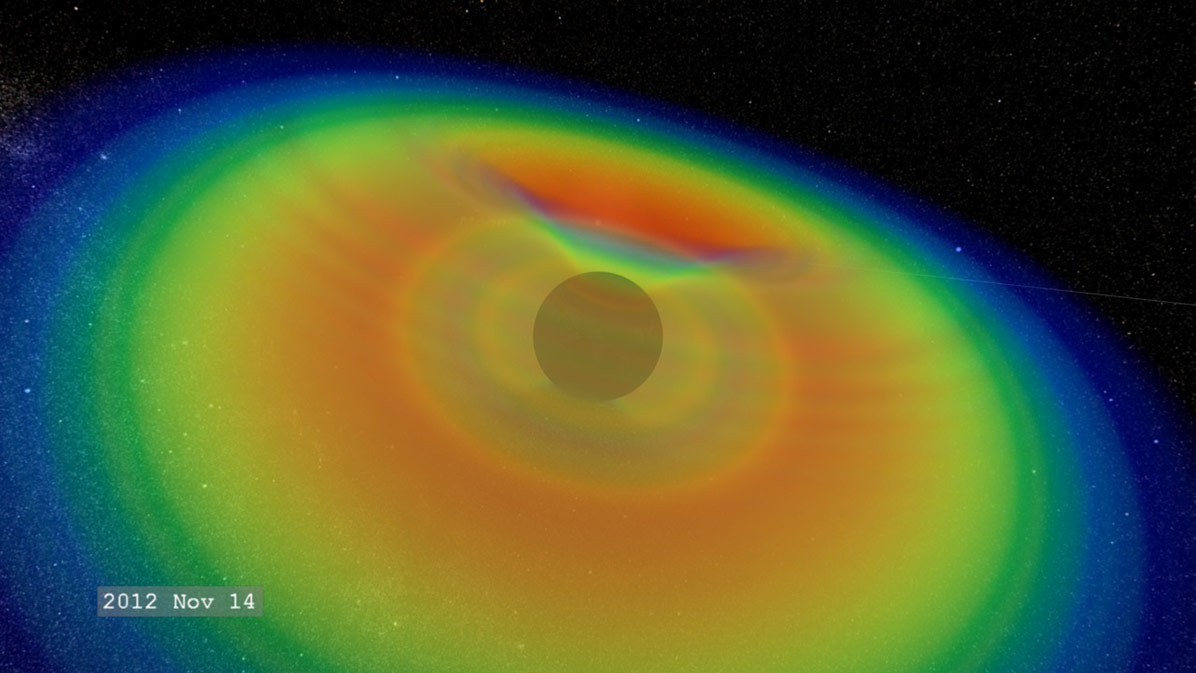
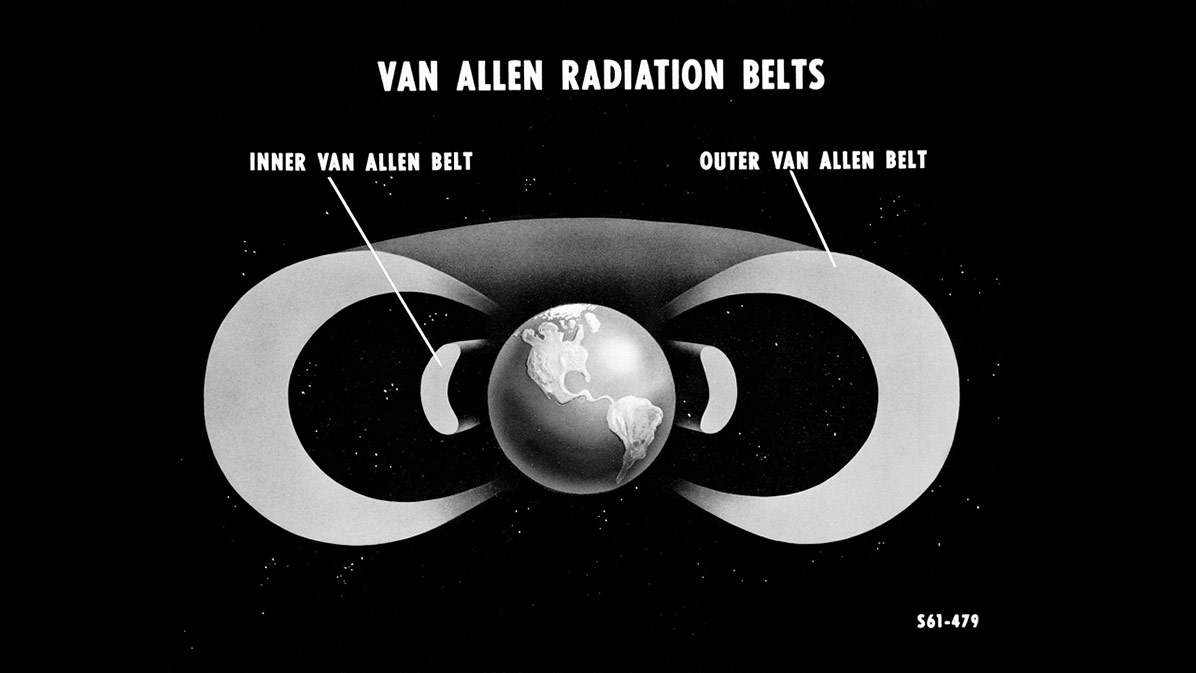
CREDITS: NASA’s Goddard Space Flight Center • Historic image of Van Allen Belts courtesy of NASA Langley Research Center
The belts are made of protons and electrons from the solar wind and cosmic rays that are captured by Earth’s magnetic field.
Some of these particles move very fast, but observations from NASA’s two Van Allen Probes show that the fastest, most energetic electrons in the inner radiation belt aren’t present as much of the time as scientists thought. That means there typically isn’t as much radiation in the inner belt as previously assumed — good news for spacecraft at risk of radiation damage when flying through that region of near-Earth space. The Van Allen Probes, specifically designed to be immune to this type of radiation, plunge through the radiation belts up to six times a day to study the physical processes that add and remove electrons from the region. The Van Allen belts are a crucial part of a larger space weather system that stretches from the Sun to Earth and beyond.
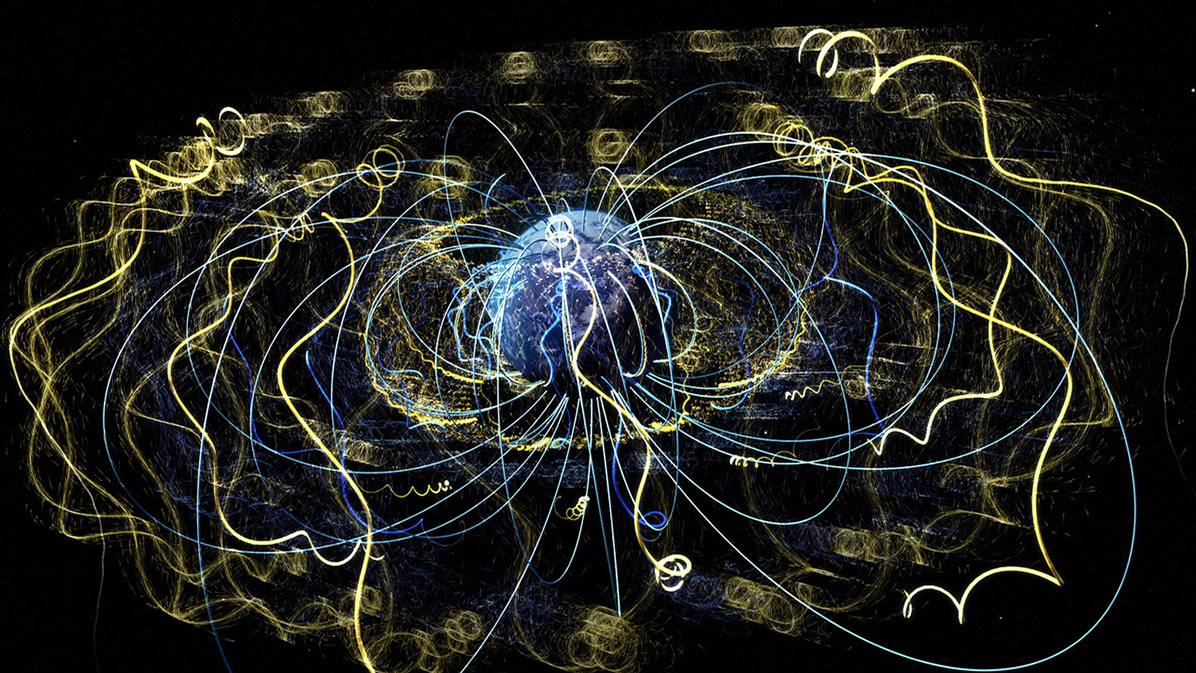
CREDIT: NASA’s Scientific Visualization Studio
SURPRISE!
Van Allen Probes Discover a 3rd Radiation Belt around Earth!
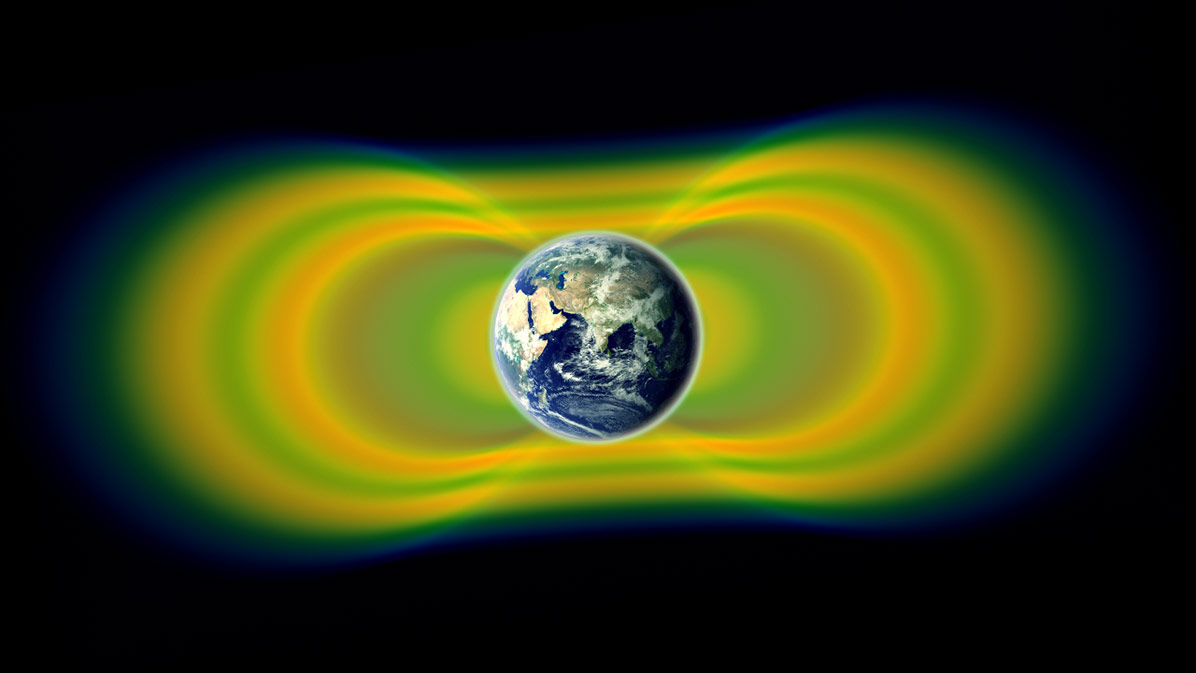
Two giant swaths of radiation, known as the Van Allen Belts, surrounding Earth were discovered in 1958. In 2012, observations from the Van Allen Probes showed that a third belt can sometimes appear. The radiation is shown here in yellow, with green representing the spaces between the belts.
The inner, outer and third rings are colored orange and green in this cutaway view of the Van Allen Belts.
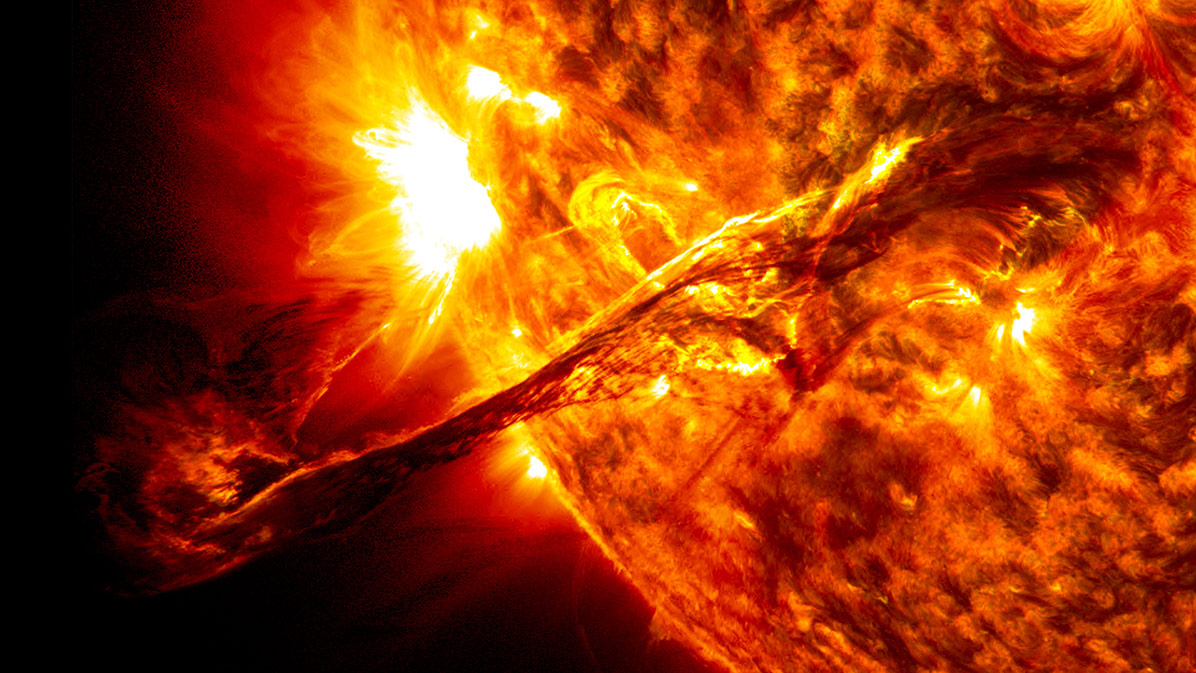
Learn about this new result in a video by NASA Goddard Heliophysics Division. Watch me and several of my colleagues on a Google Hangout at NASA Goddard.
Read more about this result at nasa.gov.

